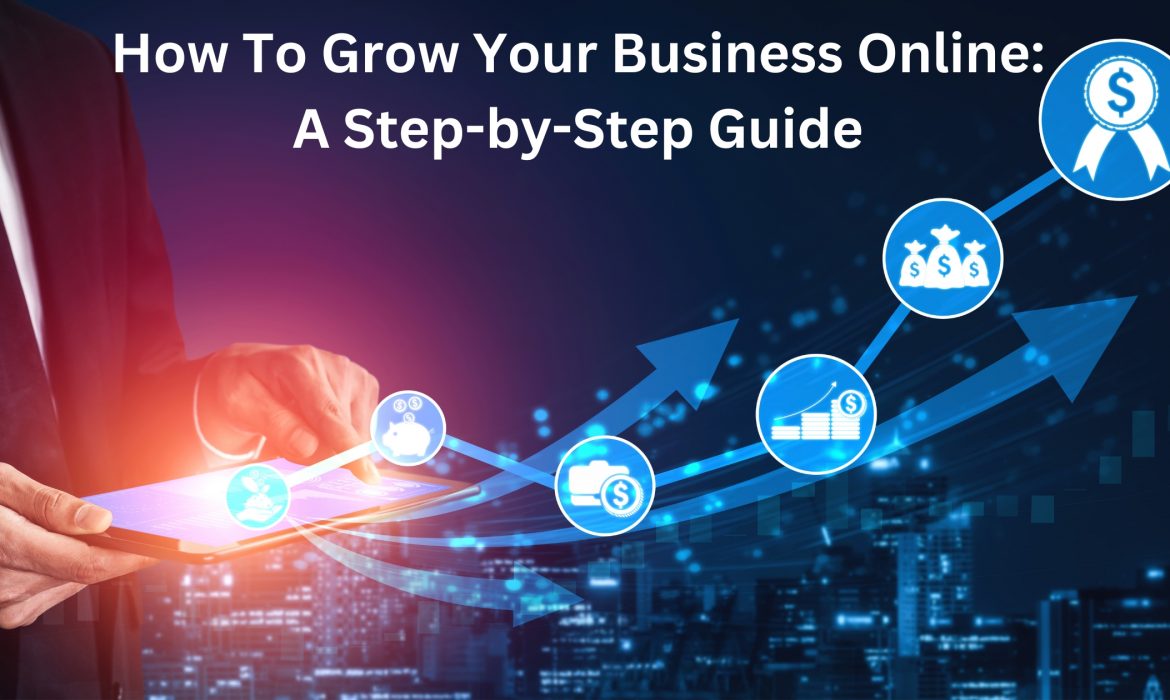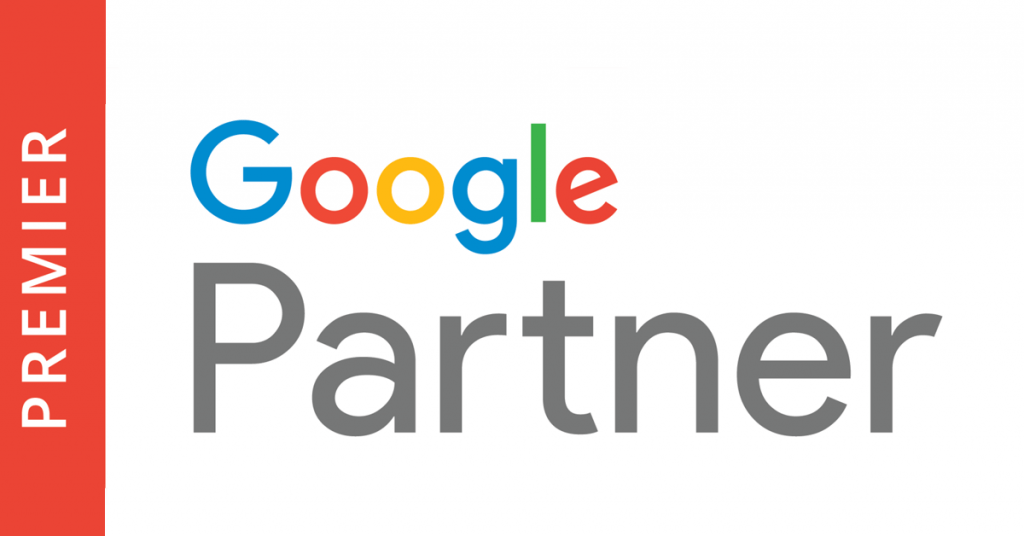

In today’s digital age, the internet has become a powerful tool for businesses to expand their reach and grow exponentially. Whether you’re a small startup or an established company, establishing a strong online presence is crucial. In this comprehensive guide, we will walk you through the essential steps to grow your business online effectively.
Table of Contents:
- Understanding Your Online Landscape
- Identifying Your Target Audience
- Analyzing Your Competitors
- Setting Clear Goals
- Creating a User-Friendly Website
- Choosing the Right Domain
- Designing an Engaging Website
- Optimizing for Mobile
- Content is King: Content Marketing Strategies
- Crafting High-Quality Content
- Blogging for Business Growth
- Video Marketing
- Mastering Social Media
- Choosing the Right Platforms
- Creating Engaging Content
- Leveraging Social Advertising
- SEO: Boosting Your Online Visibility
- Keyword Research
- On-Page and Off-Page Optimization
- Monitoring and Analytics
- Effective Email Marketing
- Building a Subscriber List
- Crafting Compelling Email Campaigns
- Automation for Efficiency
- Online Advertising: Paid Strategies
- Google Ads and PPC Campaigns
- Social Media Advertising
- Display Advertising
- Analyzing and Adapting: Analytics and Data
- Website Analytics
- Measuring ROI
- Continuous Improvement
Let’s dive into each section to understand how you can implement these strategies and take your business to new heights online.

1. Understanding Your Online Landscape
Identifying Your Target Audience
The first step to growing your business online is knowing your audience. Who are your ideal customers? What are their needs and preferences? Creating detailed buyer personas will help you tailor your marketing efforts to cater to their specific needs.
Actionable Insight: Conduct surveys, analyze social media demographics, and gather customer feedback to refine your understanding of your target audience.
Analyzing Your Competitors
Understanding your competition is key to positioning your business effectively online. Analyze what your competitors are doing well and identify areas where you can differentiate yourself. Tools like SEMrush and Ahrefs can provide valuable insights into your competitors’ strategies.
Actionable Insight: Perform a competitive analysis to identify gaps in the market and opportunities for growth that your competitors might have missed.
Setting Clear Goals
Before you embark on your online journey, define clear and measurable goals. Do you want to increase website traffic, boost sales, or enhance brand awareness? Setting specific goals will guide your online strategy and help you measure success.
Actionable Insight: Use the SMART (Specific, Measurable, Achievable, Relevant, Time-bound) framework to set clear objectives.
2. Creating a User-Friendly Website
Choosing the Right Domain
Your domain name is your online address. It should be easy to remember, relevant to your business, and preferably include keywords related to your industry. Once you’ve chosen a domain, register it through a reputable registrar.
Actionable Insight: Use domain name generators and check domain availability to find the perfect domain for your business.
Designing an Engaging Website
Your website is often the first point of contact with potential customers. Ensure it has a clean, user-friendly design that reflects your brand. Use high-quality images and compelling content to engage visitors.
Actionable Insight: Invest in professional web design or use website builders like WordPress, Wix, or Squarespace to create a visually appealing site.
Optimizing for Mobile
With the majority of internet users accessing websites on mobile devices, mobile optimization is crucial. Make sure your website is responsive, loads quickly, and offers a seamless mobile experience.
Actionable Insight: Use Google’s Mobile-Friendly Test to check if your website meets mobile optimization standards.

3. Content is King: Content Marketing Strategies
Crafting High-Quality Content
Quality content is the cornerstone of successful online marketing. Create informative, valuable, and relevant content that addresses the needs and interests of your target audience. Consistency is key.
Actionable Insight: Use keyword research to identify topics and questions relevant to your industry and audience.
Blogging for Business Growth
Blogging is an effective way to establish authority in your niche. Write informative, well-researched blog posts that provide solutions to your audience’s problems. Consistently publishing blog content can improve your website’s search engine rankings.
Actionable Insight: Develop a content calendar to plan and organize your blog posts.
Video Marketing
Video content is a powerful tool for engaging your audience. Create how-to videos, product demonstrations, and behind-the-scenes glimpses of your business. Share these videos on platforms like YouTube and social media to reach a broader audience.
Actionable Insight: Invest in video editing tools or hire a professional videographer to create high-quality videos.
4. Mastering Social Media
Choosing the Right Platforms
Not all social media platforms are suitable for every business. Determine which platforms your target audience frequents and focus your efforts there. For example, Instagram is ideal for visual brands, while LinkedIn caters to a more professional audience.
Actionable Insight: Conduct audience research to identify the most effective social media platforms for your business.
Creating Engaging Content
Consistently share compelling content on your chosen social media platforms. Use a mix of visuals, text, and videos to keep your audience engaged. Interact with your followers by responding to comments and messages promptly.
Actionable Insight: Use social media management tools like Hootsuite or Buffer to schedule and track your posts.
Leveraging Social Advertising
Social media advertising allows you to target specific demographics, interests, and behaviors. Invest in paid social media advertising to expand your reach and drive traffic to your website or landing pages.
Actionable Insight: Set clear objectives and budgets for your social media advertising campaigns.

5. SEO: Boosting Your Online Visibility
Keyword Research
Keyword research helps you understand what your target audience is searching for online. Use tools like Google Keyword Planner or SEMrush to identify relevant keywords and phrases related to your business.
Actionable Insight: Focus on long-tail keywords that have lower competition but higher conversion potential.
On-Page and Off-Page Optimization
Optimize your website for search engines by incorporating keywords into your content, meta tags, and headers. Off-page optimization involves building high-quality backlinks from reputable websites.
Actionable Insight: Create valuable, shareable content that naturally attracts backlinks from other websites.
Monitoring and Analytics
Regularly monitor your website’s performance using tools like Google Analytics. Track key metrics such as website traffic, bounce rate, and conversion rates. Use this data to make informed decisions and optimize your online strategy.
Actionable Insight: Set up custom dashboards and reports in Google Analytics to track your specific KPIs.
6. Email Marketing: The Profitable Channel
Building a Valuable Email List
Email marketing remains one of the most potent digital marketing channels. Build an email list of interested subscribers by offering incentives like ebooks, webinars, or exclusive discounts. A quality email list is the foundation for successful email campaigns.
Actionable Insight: Use pop-up forms, landing pages, and lead magnets to capture email addresses effectively.
Crafting Irresistible Email Campaigns
Effective email campaigns involve crafting compelling subject lines and content that resonates with your recipients. Personalize your emails and segment your list to send tailored messages that cater to different customer segments and stages of the buying journey.
Actionable Insight: Use email marketing automation platforms like Mailchimp, ConvertKit, or HubSpot to automate your email campaigns and improve efficiency.
Automating for Efficiency
Automation can significantly streamline your email marketing efforts. Set up automated email sequences for tasks like onboarding new customers, recovering abandoned carts, and nurturing leads. Automation ensures that your customers receive timely and relevant messages, increasing the chances of conversions.
Actionable Insight: Map out your customer journey and identify key touchpoints where automation can enhance the user experience and drive revenue.

7. Online Advertising: Paid Strategies
Google Ads and PPC Campaigns
Google Ads and PPC (Pay-Per-Click) campaigns provide immediate visibility in search results. Create targeted ad campaigns using relevant keywords to drive traffic to your website or landing pages. With PPC, you only pay when someone clicks on your ad.
Actionable Insight: Use Google Keyword Planner to conduct keyword research and create highly relevant ad groups.
Social Media Advertising
Social media advertising on platforms like Facebook, Instagram, Twitter, and LinkedIn allows you to reach a broad and highly targeted audience. Create visually appealing ads, define specific demographics, interests, and behaviors for your audience, and track campaign performance.
Actionable Insight: Experiment with A/B testing to optimize ad creatives, headlines, and targeting for better results.
Display Advertising
Display advertising involves placing banner ads on websites and apps within a network. These ads can be image or video-based and can be highly targeted. Display advertising can be an effective way to increase brand visibility and drive traffic.
Actionable Insight: Use retargeting campaigns to re-engage website visitors who didn’t convert during their initial visit.
8. Data-Driven Decision-Making: Analytics and Insights
Harnessing the Power of Web Analytics
Web analytics tools like Google Analytics provide valuable insights into your website’s performance. Monitor key metrics such as website traffic, conversion rates, and user behavior. Analyze this data to make informed decisions and optimize your online strategy.
Actionable Insight: Set up goal tracking in Google Analytics to measure specific actions and conversions on your website.
Continuous Improvement with A/B Testing
A/B testing (split testing) is a systematic way to improve your website’s performance. It involves comparing two versions (A and B) of a webpage or element to determine which one performs better in terms of user engagement or conversion rates.
Actionable Insight: Test elements such as headlines, CTAs, images, and page layouts to discover what resonates best with your audience.
Staying Ahead with Competitive Analysis
Competitive analysis allows you to benchmark your online performance against that of your competitors. Identify your competitors’ strengths and weaknesses, uncover their online strategies, and use this information to refine your own tactics and stay ahead in the digital landscape.
Actionable Insight: Regularly monitor and track your competitors’ online activities, changes to their websites, and their social media engagement.
Conclusion
Growing your business online is a dynamic journey that requires continuous learning, adaptation, and dedication. By following the strategies and tactics outlined in this guide, you’ll be well-equipped to expand your online presence, reach a broader audience, and achieve sustainable growth for your business. Remember, the digital landscape is ever-evolving, so stay informed about the latest trends and technologies to remain competitive in your industry.
FAQS
1. What does it mean to “grow your business online”?
- Growing your business online refers to the process of using digital strategies and tools to expand your brand’s presence, attract new customers, increase revenue, and achieve business goals on the Internet.
2. Why is growing a business online important?
- In today’s digital world, consumers turn to the internet to discover, research, and purchase products and services. Growing your business online is crucial to reach your target audience where they spend a significant amount of their time.
3. What are the key components of a successful online growth strategy?
- A successful online growth strategy typically includes elements like a user-friendly website, content marketing, social media engagement, search engine optimization (SEO), email marketing, online advertising, and data analytics.
4. How can I identify my target audience online?
- Identifying your target audience online involves conducting market research, analyzing user data, and creating buyer personas. These personas represent your ideal customers and help tailor your online marketing efforts.
5. What role does a website play in growing a business online?
- Your website serves as the digital face of your business. It’s where potential customers learn about your products or services, make purchases, and engage with your brand. An effective website is essential for online growth.




